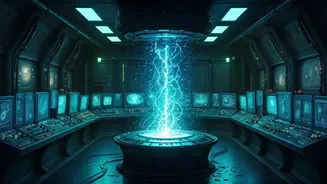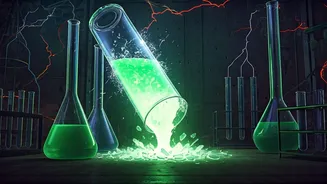Gravity's Cinematic Blunders
One of the most fundamental forces, gravity, is frequently misrepresented in film. A common mistake is the portrayal of explosions in space. In reality,
explosions need a medium to propagate; sound waves, for instance, cannot travel through the vacuum of space. Therefore, explosions in space would be largely silent, yet movies frequently depict them with dramatic sound effects. Moreover, the way objects move in space is often inaccurate. Objects float in zero gravity, which is a state of freefall, but movies often depict characters moving and reacting with a sense of gravity, which would be unnecessary and incorrect.
Sound in the Void
Space, a place of profound silence, is often portrayed in film as a noisy environment. The dramatic explosions and roaring spacecraft are far from reality, as sound needs a medium like air to travel. Without air, or any other medium, sound waves cannot propagate, resulting in a silent explosion. However, for dramatic effect, filmmakers regularly ignore this scientific fact. This artistic license creates exciting visuals, but it also underscores the divergence between science and cinematic storytelling. It’s an example of how the visual and auditory experience is prioritized over scientific accuracy to enhance the viewer's experience.
Teleportation Realities
Teleportation, a staple of science fiction, is often depicted as instantaneous and effortless, but it defies the known laws of physics. The ability to disassemble and reassemble matter at a distance, as often seen in films, faces enormous technical and theoretical hurdles. These include the problem of maintaining the quantum state of every single particle and the sheer energy required. Current understanding suggests that true teleportation, as portrayed in movies, is not possible. Filmmakers use this concept to create exciting narratives, regardless of the significant challenges.
Light and Laser Issues
Lasers, commonly used as weapons in movies, are frequently shown with inaccuracies. The behavior of light is often misrepresented. Beams of light, especially from lasers, are depicted as straight lines, yet light spreads as it travels. Another common inaccuracy is the suddenness with which lasers impact objects. In reality, light travels at a finite speed, so there would be a brief delay between the laser firing and the impact. These dramatic licenses allow filmmakers to create action-packed scenes, however, they also create a distinction between scientific reality and cinematic portrayal. Understanding these discrepancies allows for a deeper appreciation of the creative liberties that are often taken in movie production.
Time Travel Paradoxes
Time travel, a rich theme in science fiction, often runs into the paradox of changing the past, leading to self-contradictory scenarios. Films frequently present time travel as a mechanism where events can be undone or altered. If a character travels back in time and prevents their own birth, it creates a fundamental paradox. This is often ignored for the sake of the narrative. The complexities of causality and the nature of time itself are difficult to incorporate without breaking the flow of a story. Filmmakers usually circumvent these issues by focusing on the immediate narrative impact of their time travel plots.
Biology's Missteps
The field of biology is often subject to simplification or outright incorrectness for the sake of drama. The portrayal of genetic modification, rapid evolution, and the spread of diseases often deviates from what is scientifically accurate. For instance, the incubation periods for viruses, the effects of radiation, and the speed of mutations are frequently exaggerated or misrepresented. These misinterpretations can be found in a variety of films, often resulting in compelling stories at the expense of scientific accuracy. These instances offer a window into how science can be manipulated for storytelling purposes.
Atmospheric Inconsistencies
The depiction of atmospheric phenomena, such as weather and climate, is often simplified in movies. Extreme weather events are often shown without the context of their causes or the consequences. Dramatic storms, hurricanes, and floods frequently appear without realistic explanations of their formation. While visual effects have improved greatly, accurately depicting the complexity of atmospheric systems remains a challenge. Atmospheric inconsistencies help convey mood and raise the stakes in various scenes, but they often diverge significantly from scientific accuracy. The simplification can be useful in keeping the story accessible.
Realistic vs. Dramatic
Ultimately, the use of science in movies often becomes a balance between realism and dramatic effect. Filmmakers have to weigh the need for accuracy against the desire to create exciting and engaging narratives. While some movies make strong efforts to incorporate scientific principles, others prioritize entertainment. It’s interesting to observe where these trade-offs are made. The inaccuracies, whether intentional or not, reflect the artistic choices and production constraints inherent in filmmaking, creating a fascinating interplay between science and entertainment.










